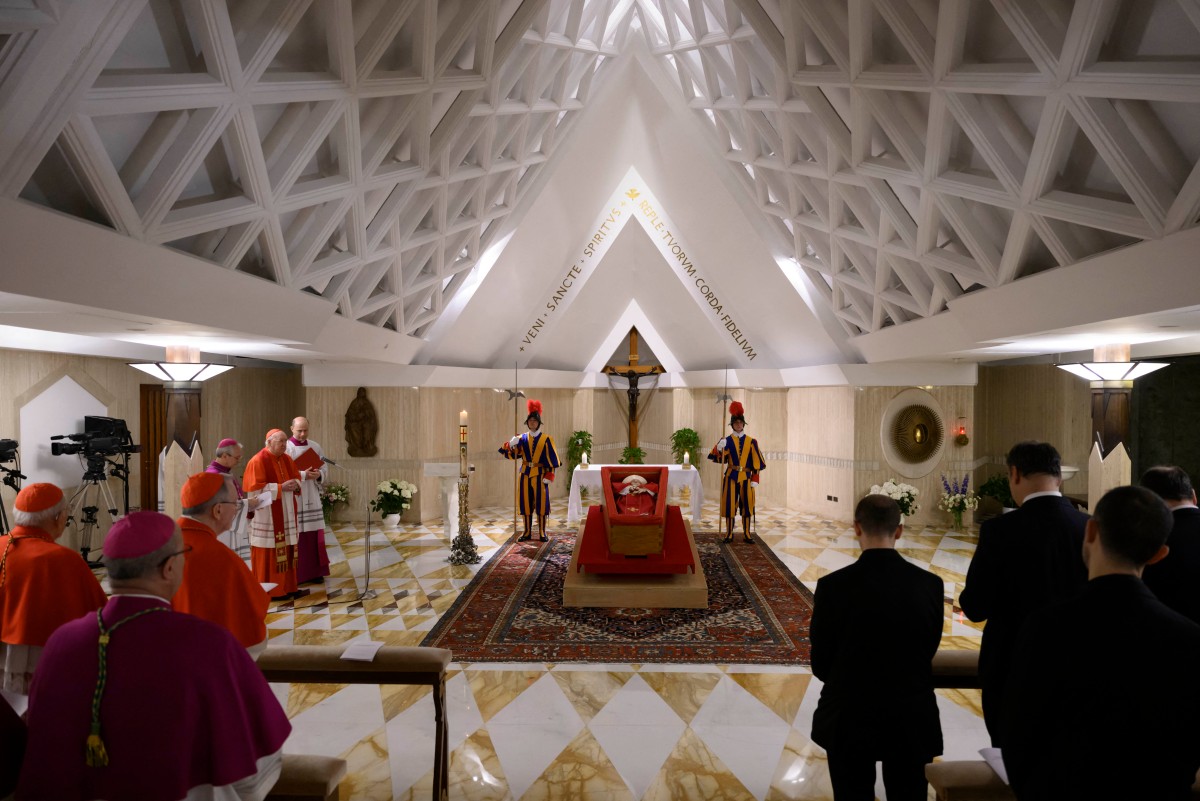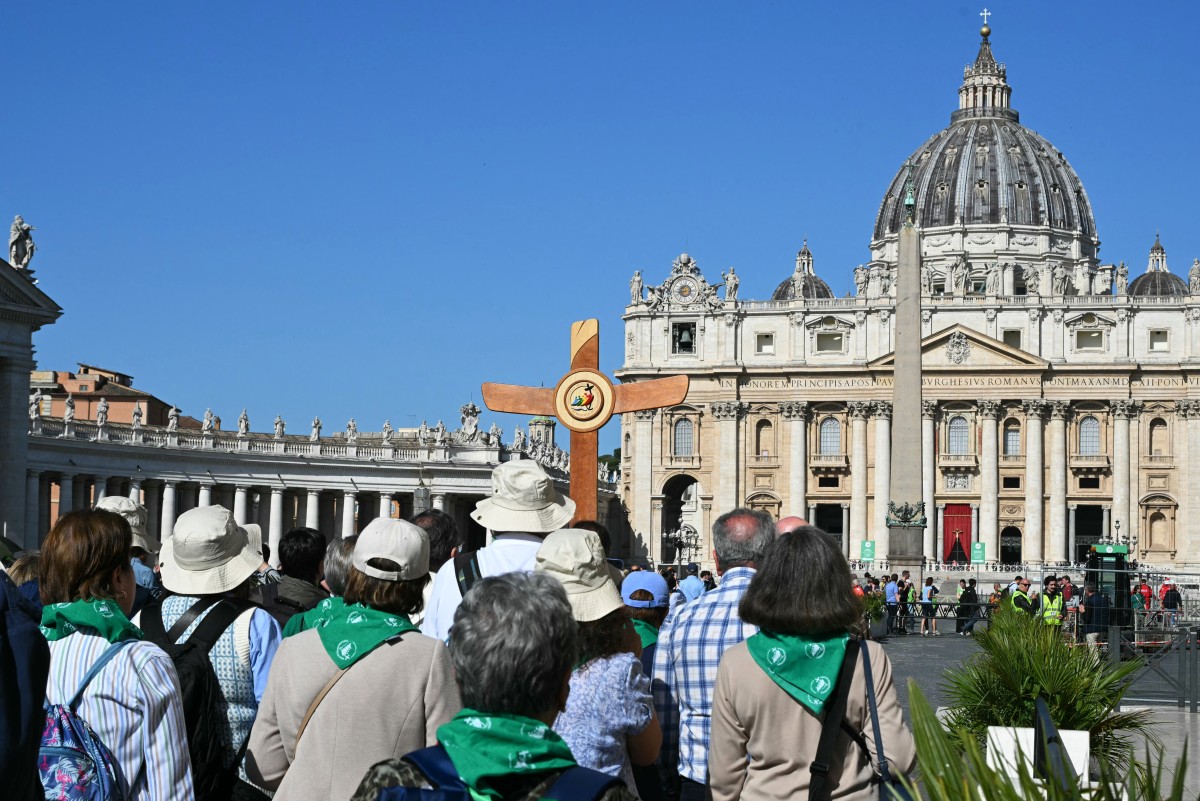
By Agence France-Presse
The Vatican announced on Tuesday, April 22, that Pope Francis’ funeral will be held on Saturday, April 26, as world leaders from the U.S. President Donald Trump to Ukraine’s Chief Executive Volodymyr Zelensky said they would attend to honor the Catholic leader.
The Argentine pontiff, 88, died on Monday, April 21, from a stroke, less than a month after returning home from five weeks in hospital battling double pneumonia.
His funeral, which is expected to draw huge crowds, will take place at 10:00 am (0800 GMT) on Saturday in the square in front of St. Peter’s Basilica at the Vatican.
Francis’s coffin, which he previously ordered should be of wood and zinc, will then be taken inside the church and from there to the Rome Basilica of Santa Maria Maggiore for burial.
The date was set by the first so-called “general congregation” of cardinals on Tuesday morning, which kicked off a centuries-old process that culminates in the election of a new pontiff within three weeks.
Earlier, the Vatican published the first images of the pontiff in his open coffin, ahead of its transfer to St. Peter’s Basilica on Wednesday, April 23, at 9:00 am (0700 GMT), to lie in state.
The pope’s body was photographed during a service on Monday evening in the chapel of Casa Santa Marta, the Vatican residence where he lived during his 12-year papacy and where he died. Francis was wearing his red papal vestments and a mitre on his head and had a rosary between his fingers.
Tributes have poured in from around the globe for Francis, a liberal reformer who took over following the resignation of German theologian Benedict XVI in 2013.
His home country, Argentina, prepared for a week of national mourning, while India began three days of state mourning on Tuesday, a rare honor for a foreign religious leader in the world’s most populous nation.
Heads of state and royalty are expected for his funeral, with Trump and France’s President Emmanuel Macron the first to announce they would attend even before a date was confirmed. On Tuesday, a source at the Ukrainian presidency told AFP that Zelensky, too, would come to Rome.
Cardinals of all ages are invited to the congregations, although only those under the age of 80 are eligible to vote for a new pope in the conclave. The conclave should begin no less than 15 and no more than 20 days after the death of the Pope.

Simple tomb
The pope’s body was moved into the Santa Marta chapel on Monday evening, April 21, and his apartment has been formally sealed, the Vatican said.
Francis, who wore plain robes and eschewed the luxury of his predecessors, has opted for a simple tomb, unadorned except for his name in Latin, Franciscus, according to his will released on Monday.
In choosing to be buried in Rome’s Santa Maria Maggiore basilica, he will become the first pope in more than 100 years to be laid to rest outside the Vatican.
His death certificate released by the Vatican said Francis died of a stroke, causing a coma and “irreversible” heart failure.
He had been discharged from Rome’s Gemelli hospital on March 23 and ordered to spend at least two months resting.
But Francis, who never took a holiday and delighted in being among his flock, made numerous public appearances in recent days. He appeared exhausted on Sunday, April 20, during the Easter celebrations, but nevertheless greeted the crowds in his popemobile in St. Peter’s Square.
Argentine football great Lionel Messi hailed his compatriot — himself a huge fan of the beautiful game — for “making the world a better place.”

Eyes of God
On Monday evening, April 21, thousands of faithful, some bringing flowers or candles, flocked to St. Peter’s Square at sunset to pray for Francis.
“He tried to get people to understand it doesn’t matter your sexual orientation, your race, it doesn’t matter in the eyes of God. I think that’s the closest to what Jesus intended,” Mateo Rey, 22, a Mexican student, told AFP.
Born Jorge Bergoglio, Francis was the first pope from the Americas and the first Jesuit to lead the worldwide Catholic Church.
An energetic reformer, he sought to open the Church to everyone and was hugely popular, but his views also sparked fierce internal opposition.
In 12 years of papacy, Francis advocated tirelessly for the defense of migrants, the environment, and social justice without questioning the Church’s positions on abortion or priestly celibacy.
Outspoken and stubborn, Francis also sought to reform the governance of the Holy See and expand the role of women and lay people and to clean up the Vatican’s murky finances.
Faced with revelations of widespread child sex abuse in the Church, he lifted pontifical secrecy and forced religious and lay people to report cases to their superiors. However, victims’ groups said he did not go far enough.
